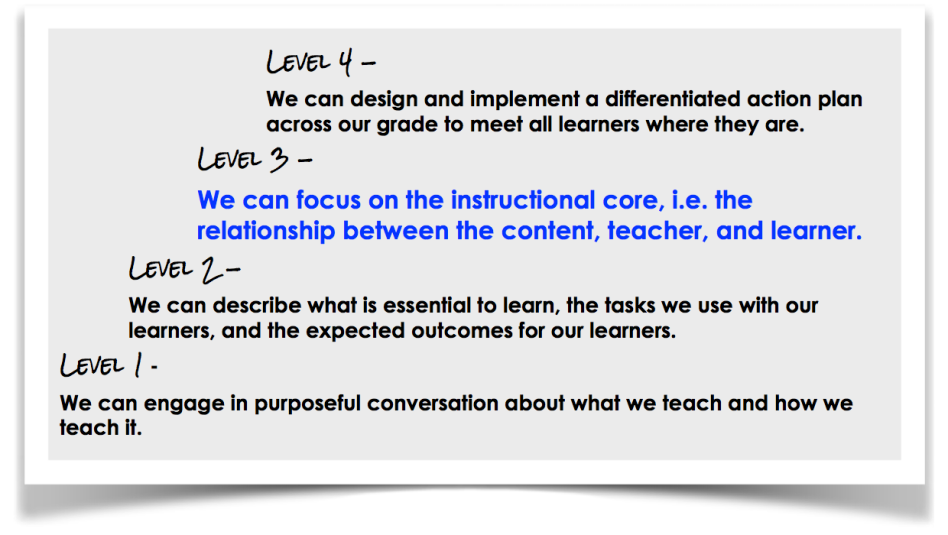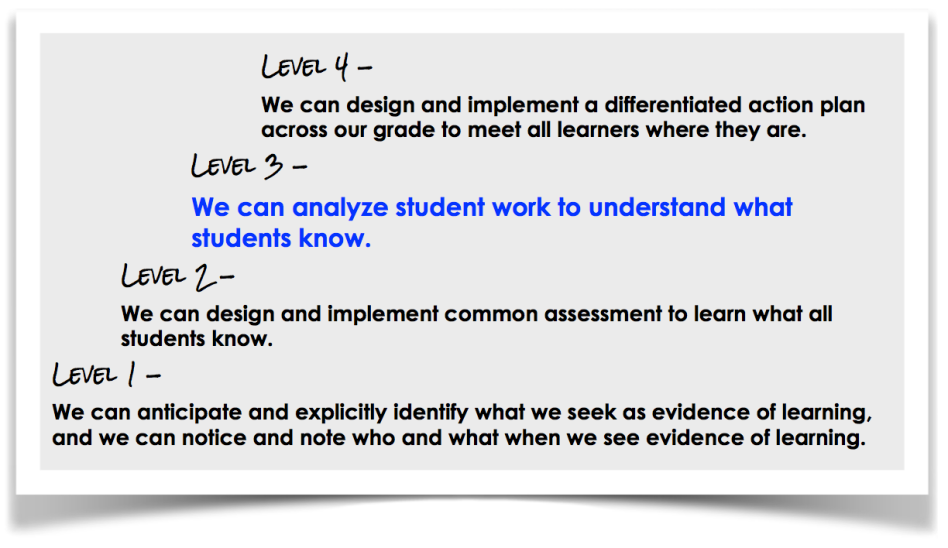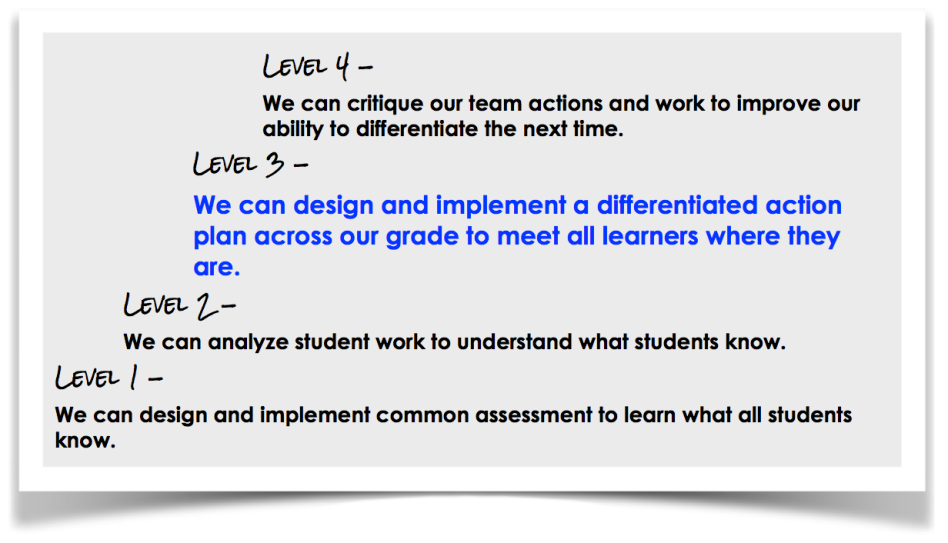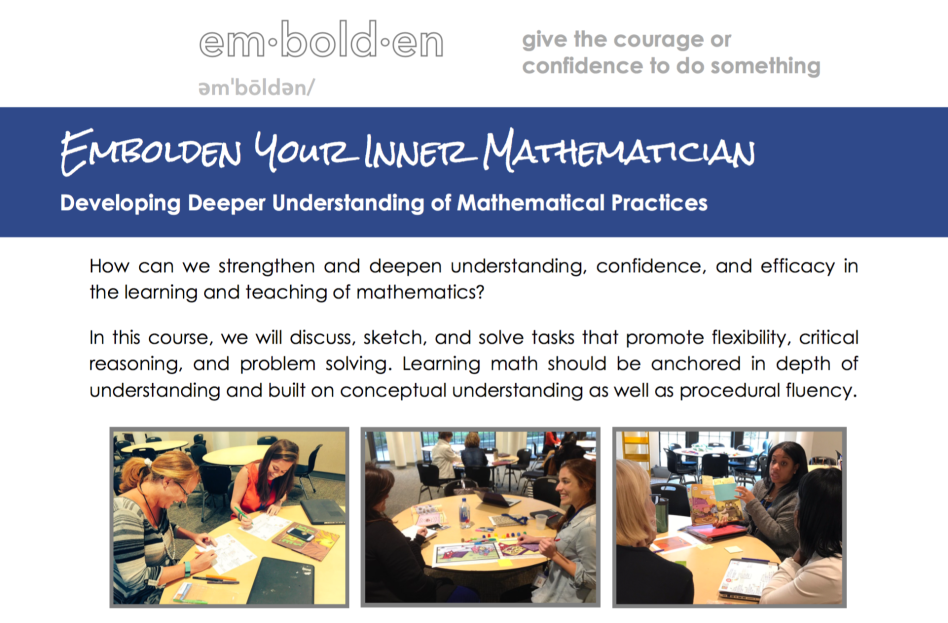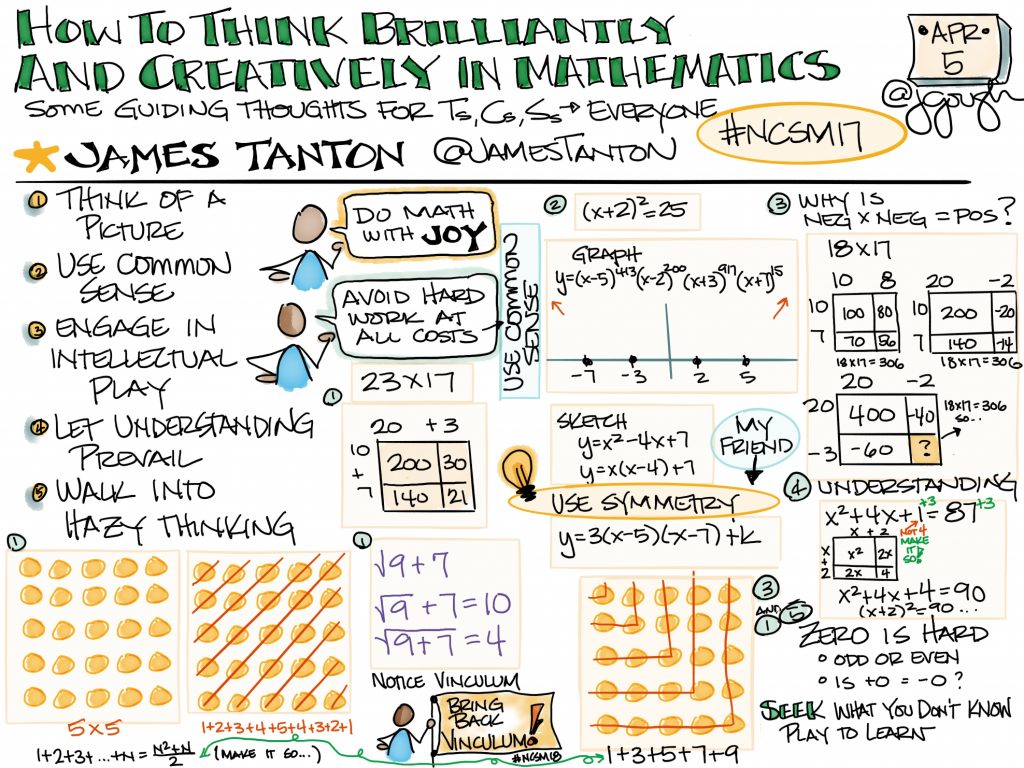From NCTM’s publication, Principles to Actions: Ensuring Mathematical Success for All:
Elicit and use evidence of student thinking.
Effective teaching of mathematics uses evidence of student thinking to assess progress toward mathematical understanding and to adjust instruction continually in ways that support and extend learning.
| 7:15 | 45 min | Establishing Intent, Purpose, Norm Setting
|
| 8:00 | 15 min | Continuing Talking Points – Elizabeth Statmore (@chessemonkeysf)
|
| 8:15 | 20 min | Number Splats – Steve Wyborney (@SteveWyborney) |
| 8:25 | 20 min | Fraction Splats – Steve Wyborney (@SteveWyborney) |
| 8:45 | 15 min | Planning for Splats
|
| 9:00 | 15 min | Closure and Reflection
|
| 9:15 | End of session |
- Elicit and use evidence of student thinking using Splats. What will/did you learn?Homework:
- Write to describe your quest for Closest to One using Open Middle worksheet with I can show my work so a reader understands without asking me questions.
- Deeply read pp. 207-211 from TAKING ACTION: Implementing Effective Mathematics Teaching Practices in K-Grade 5
- What the Research says: Elicit and Use Evidence of Student Thinking
- Promoting Equity by Eliciting and Using Evidence of Student Thinking
- Read one of the following from TAKING ACTION: Implementing Effective Mathematics Teaching Practices in K-Grade 5
- pp.183-188 Make a Ten
- pp.189-195 The Odd and Even Task
- pp. 198-207 The Pencil Task
Leinwand, Steve. Principles to Actions: Ensuring Mathematical Success for All. Reston, VA.: National Council of Teachers of Mathematics, 2014. (p. 46) Print.
Smith, Margaret Schwan., et al. Taking Action: Implementing Effective Mathematics Teaching Practices in Grades K-5. The National Council of Teachers of Mathematics, 2017.
Statmore, Elizabeth. “Cheesemonkey Wonders.” #TMC14 GWWG: Talking Points Activity – Cultivating Exploratory Talk through a Growth Mindset Activity, 1 Jan. 1970.





